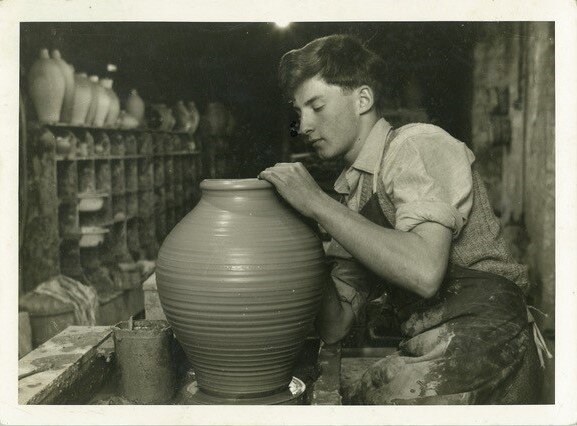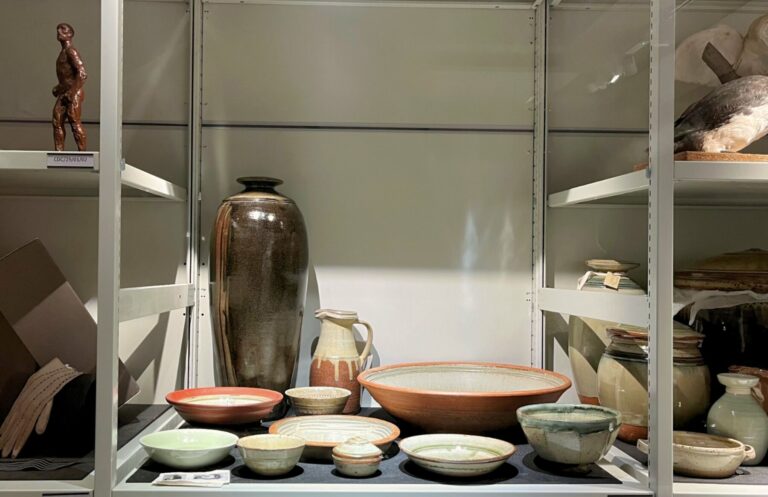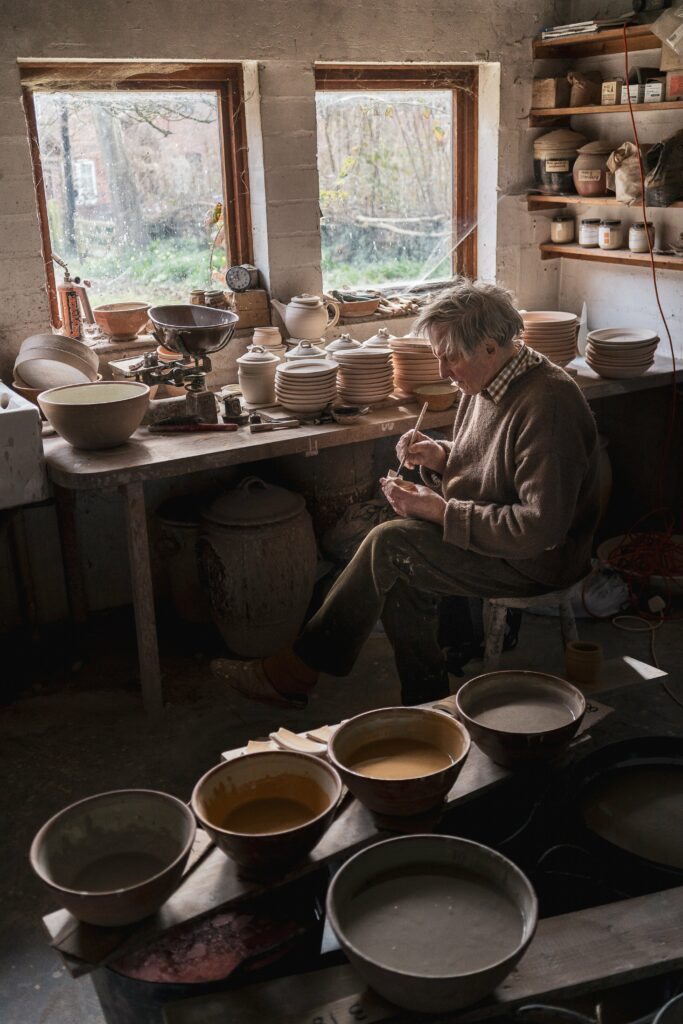Despite growing numbers of customers, Batterham always worked alone, seeing through every aspect of his pots, from concept to reality, something that was important to the Studio Pottery movement. He even produced his own mixes of clay, predominantly working with stoneware clay, fired at a high temperature, used for creating robust and practical items. Many of Batterham’s pots were inspired by everyday life, including for practical uses in his home and he produced hundreds of pots a year.
Batterham’s independence as a potter allowed him to develop his own unique style through forms, glazes and markings, and build a name for himself in Studio Pottery circles. Instead of delicately decorating his pots, he opted to use techniques to change their surface, such as creating ribs, beating, combing, fluting and cutting away slices of clay, as you can see with his cut-sided vessels.
The glazes are also what makes Batterham’s pots unique, as he spent time testing and developing his own iron and ash glaze recipes. These were not always applied over the whole pots, often leaving sections unglazed, adding to the range of different textures and surfaces that made up the beauty of his designs.





